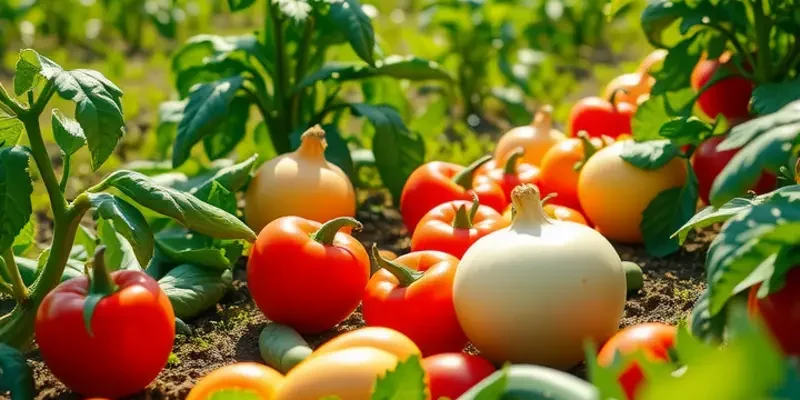Eating healthily doesn’t mean you have to give up your favorite foods. Embracing nutrition can be a delicious journey instead of a restrictive challenge. By choosing nutrient-dense ingredients that satisfy your cravings, you can enhance your well-being without sacrificing taste. This exploration reveals simple ways to elevate your meals, whether you’re just starting or have some experience in the kitchen. Get ready to discover how to indulge in wholesome, vibrant food that fills both your plate and your heart with joy.
Colorful Plates: The Power of Whole Foods

Incorporating whole foods into your diet means embracing the kaleidoscope of Mother Nature’s palette. The vibrant reds, greens, yellows, and blues on your plate are not just visually appealing; they signify a diversity of nutrients essential for health. Each color represents different phytonutrients and vitamins that aid bodily functions. For instance, red vegetables and fruits like tomatoes and strawberries are rich in antioxidants such as lycopene, which support heart health. Green choices like spinach and kale are packed with folate and vitamin K, crucial for bone strength.
When it comes to nutritional value, freshness is vital. As soon as produce is harvested, the clock starts ticking on its nutrient density. Fresher foods retain more vitamins and minerals, making it crucial to source locally grown produce where possible. Local fruits and vegetables often travel shorter distances, reducing the time between farm and table and, therefore, maintaining more nutritional value.
Whole foods, unprocessed and in their natural state, provide superior flavor. Unlike processed foods that rely on sugar, salt, or fat to enhance taste, whole foods offer a depth of flavor that needs little augmentation. A ripe peach, for example, delivers natural sweetness that beats any artificially flavored snack. Furthermore, cooking these foods properly can elevate their flavors and textures. For those short on time, you can explore minimal prep dinner ideas to ensure whole foods are a constant in your meals without consuming too much time.
Selecting whole foods means being mindful at the market. Start by shopping the perimeter of your grocery store, where fresh produce, meats, and dairy reside. Be wary of packaged foods claiming to be whole; always check labels for hidden sugars and preservatives. Opt for foods with fewer ingredients; the simpler the item, the better.
To make whole foods a diet staple, integrate them into your daily routine incrementally. Begin by substituting processed snacks with fresh fruits, or exchange refined grains for whole grains. Experiment with different cooking techniques that enhance their inherent flavors—roasting vegetables, steaming greens, or grilling fruits. Having a variety of cooking methods at your disposal ensures you don’t fall into monotonous eating habits.
The impact of transitioning to a diet rich in whole foods extends beyond personal health. It’s also a sustainable choice, encouraging support for local agriculture and reducing the carbon footprint associated with long-distance food transportation. Whole foods as a staple create a symbiotic relationship between consumer health and environmental stewardship.
Embracing whole foods is less about giving up indulgence and more about redefining it with richness in color and taste that can be celebrated daily. Through intentional choice and preparation, whole foods can indeed delight both palate and body, offering a satisfying path to better eating without feeling like sacrifice.
Flavorful Choices: Cooking Techniques That Shine

When striving to eat better without compromising pleasure at the table, choosing the right cooking method is key. By mastering techniques that enhance flavor and retain nutrients, you’re able to transform simple ingredients into enticing meals. Among the most effective methods are grilling, roasting, and stewing.
Grilling sears the exterior of food, locking in juices and creating a delightful smoky flavor that many find irresistible. This technique is ideal for vegetables, lean meats, and even fruits. Grilled zucchini can become a side dish that shines, while peaches on the grill make for a surprising and delightful dessert. Not only does grilling enhance taste, but it also allows excess fat to drip away from meat, making it a healthier option.
Roasting involves cooking food in an oven, which lets you develop depth in flavor while retaining nutrients. Vegetables such as carrots and Brussels sprouts become caramelized, highlighting their natural sweetness. Roasting is also a simple way to prepare proteins like fish and chicken, as it requires minimal attention once in the oven. This method works wonderfully in batch cooking, ensuring leftovers are just as flavorful. For guidance on how to integrate minimal prep roast dinners into your week, explore our section on minimal-prep dinner ideas.
Stewing combines ingredients with liquid in a covered pot and cooks them slowly over time. This method breaks down tougher cuts of meat, making them melt-in-your-mouth tender. An added advantage is nutrient retention; as the food cooks in its juices and any liquid added, valuable vitamins and minerals are preserved in the result you savor. A hearty lentil stew, simmered with herbs and aromatic vegetables, can warm your soul without weighing you down.
To quickly start using these techniques, consider these easy recipe ideas: a grilled vegetable platter with a tangy lemon yogurt sauce, roasted chicken with rosemary and garlic, and a hearty chickpea and tomato stew. These dishes require few ingredients and minimal time, offering a perfect balance of taste and nutrition.
By focusing on these flavor-enhancing cooking methods, you’re more likely to enjoy nutritious meals that satisfy both your taste buds and your desire to eat healthily. Embrace these techniques to ensure your culinary adventures are both healthful and delicious.
Final words
Healthy eating is not about deprivation, but rather about making conscious choices that enhance your life while delighting your taste buds. By focusing on whole, colorful foods and mastering cooking techniques, you can create meals that nourish both body and soul. Remember, the journey to better eating can be enjoyable and fulfilling. Embrace the adventure, experiment with flavors, and allow yourself to savor every moment, knowing that each bite contributes to your well-being.







